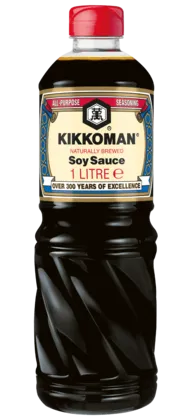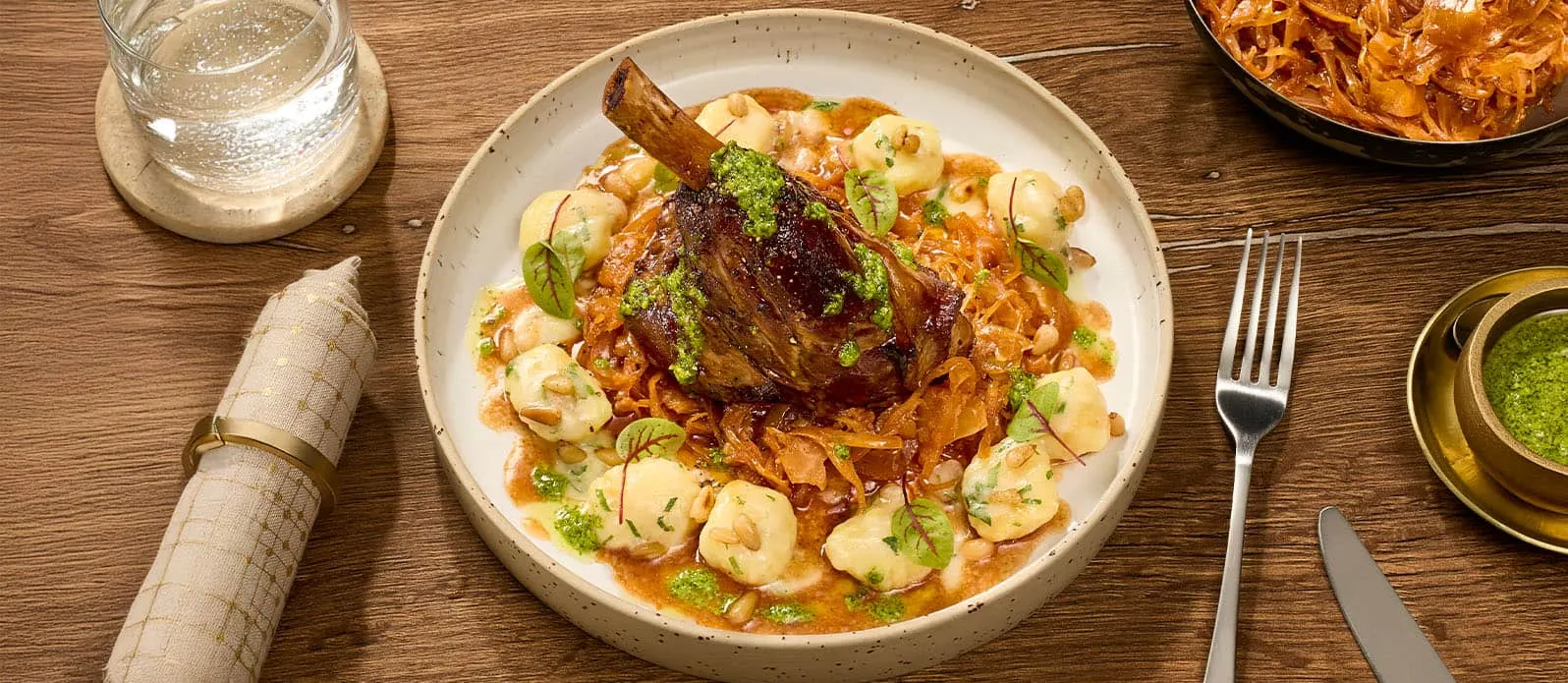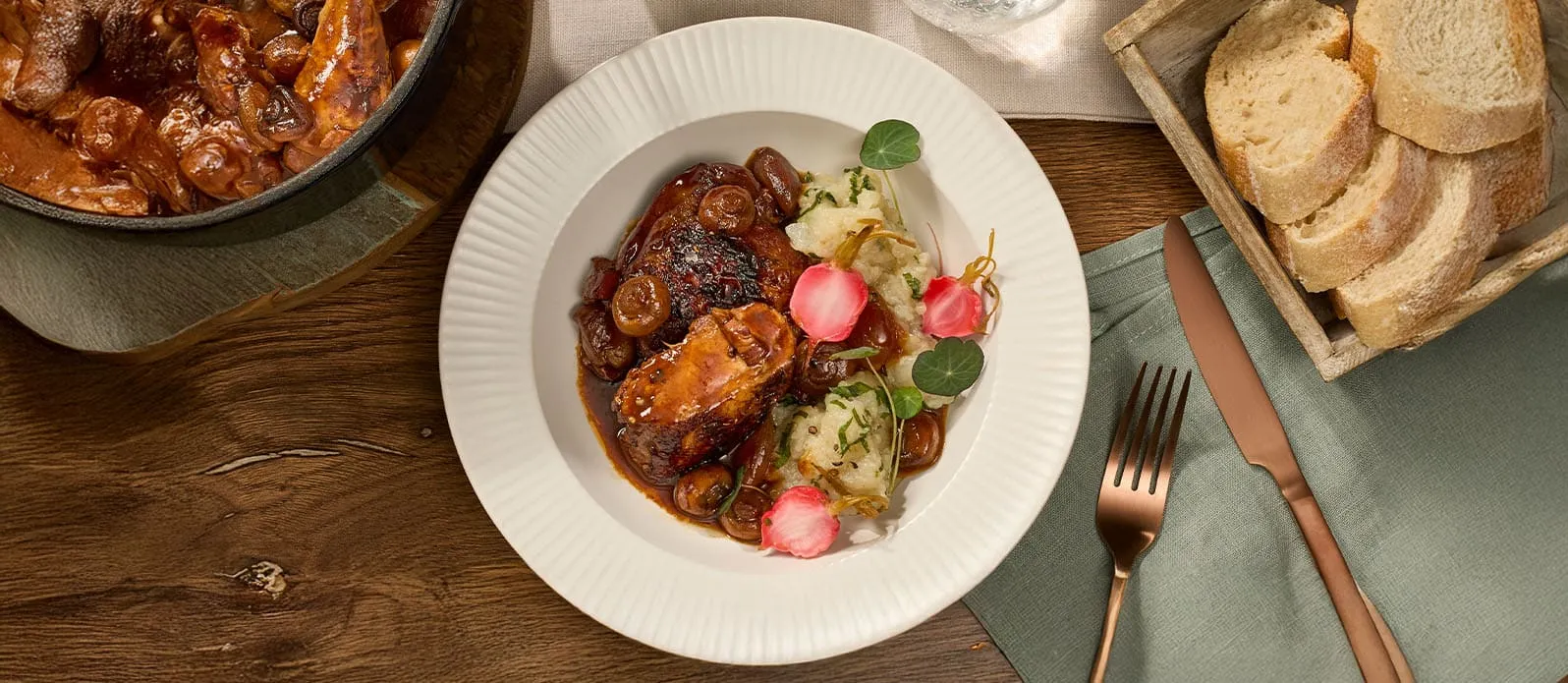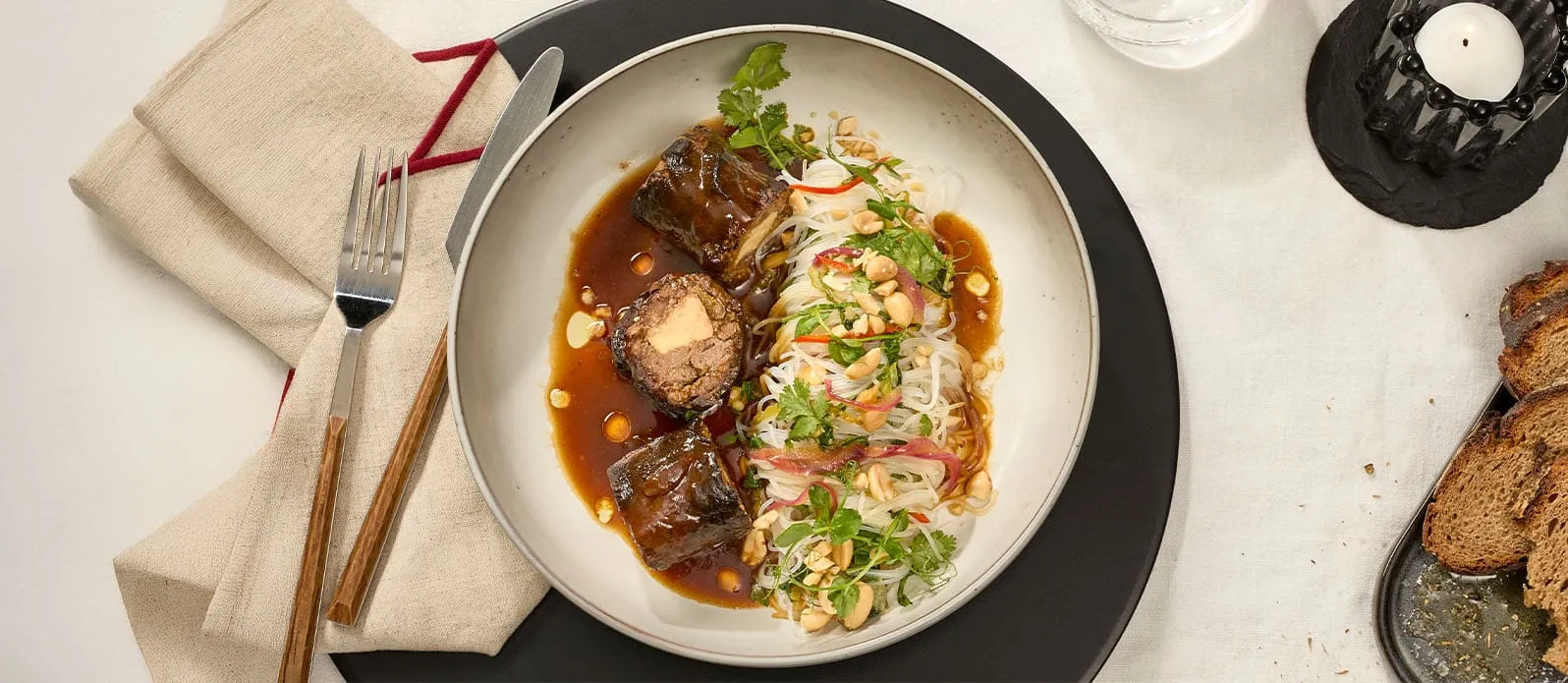Umami dishes: How to add more depth to your recipes
19. February 2025

What is umami?
As a professional chef, you know how important deep flavour is in your dishes. That’s where umami comes in. Often called the “fifth taste”, this savoury, rounded flavour adds a special touch to your creations.
"Umami" is a Japanese word that translates to “delicious” or "savoury". Scientifically speaking, amino acids are responsible for this taste, especially glutamic acid, which is also known as glutamate.
Glutamate is often unfairly criticised and mistaken as a chemical additive. However, it occurs naturally in many foods such as tomatoes, cheese, mushrooms and meat. The natural form of glutamate in food is essential for our metabolism and nervous system.
Many of our products naturally contain the umami flavour. Kikkoman Soy Sauce, in particular, is bursting with this depth of flavour. That's why you can use Kikkoman Soy Sauce to give all your dishes a rounded and irresistible taste.
What does umami taste like and where do you perceive it?
Umami is often described as savoury, full-bodied, and pleasantly “rounded.” Just like sweet, salty, sour, and bitter, umami is not limited to specific areas of the tongue.
Instead, the umami flavour unfolds across the entire tongue, creating a harmonious taste experience. This results in a pleasantly rounded sensation that makes your dishes intense and full-bodied.

This is what umami enjoyment tastes like – a little test
It’s often difficult to describe umami in words. Unlike sweet, salty, sour, or bitter, umami is easier to feel on the tongue than to explain.
- Take a sip of salted tomato juice. But make sure the proportions are right: 99.3 g of tomato juice and 0.7 g of salt (the salt content is therefore 0.7%). It will taste salty.
- Now take a sip of pure tomato juice without any added salt (0% salt concentration). It will taste bland.
- Finally, take a sip of tomato juice with Kikkoman Soy Sauce. The ratio here is 96.5 g of tomato juice to 3.5 g of Kikkoman Soy Sauce. The result is a rounded, full-bodied flavour—that’s umami!
By adding Kikkoman Soy Sauce, you also reduce the salt content to 0.5% compared to the salted version, without sacrificing taste. On the contrary, you even intensify the flavour.
How does umami come about?
The umami flavour is often created by amino acids such as glutamic acid, which are mainly found in protein-rich foods. You may already be familiar with this effect from ingredients such as:
- Kikkoman Soy Sauce
- Aged cheese
- Fried meat
- Fish
- Olives
- Anchovies
- Beans
- Tomatoes
They are naturally rich in umami. As you can see, there are many ingredients and techniques that can naturally enhance the umami enjoyment of your dishes.
Which ingredients and dishes naturally contain umami?
You can accentuate the umami flavour naturally in a variety of dishes. Here are some ideas:
- Soups and broths with soy sauce: Kikkoman Soy Sauce is a real umami bomb and can replace salt in soups in many dishes to add depth and flavour at the same time. It goes perfectly with clear broths, soups and even hearty stews.
- Mushroom dishes: mushrooms, especially shiitake and button mushrooms, contain high amounts of natural glutamate. You can fry them or use them in sauces and ragouts to add an earthy, savoury umami flavour to your meals.
- Tomato dishes: ripe tomatoes and tomato products like sun-dried tomatoes are rich in umami, making them perfect for sauces and stews or for refining dressings.
- Nutritional yeast: a real insider tip, especially in vegan and vegetarian dishes. It adds a nutty, cheesy flavour that brings out the best in any sauce or puree.
Some ingredients, such as meat and mushrooms, only unveil their umami taste during preparation. Techniques such as cooking, curing, fermenting or ageing unlock the deep, rounded flavour hidden within these foods.
Our shabu-shabu beef and vegetable hot pot is a real umami bomb, bringing together star umami ingredients like beef, tofu and mushrooms. The dish is perfectly finished with the deep flavour of Kikkoman Soy Sauce.

How to add more umami to your dishes
Here are some tips to help you unlock the full umami potential in your recipes:
Use soy sauce instead of salt: soy sauce not only replaces salt but also adds a deeper, more complex note to your dishes. A dash of soy sauce goes well even with sweet recipes like chocolate sauce or caramel, intensifying the flavour and creating new aromas.
Combine umami-rich ingredients: choose naturally umami-rich foods like tomatoes, cheese, fermented products, and Kikkoman Soy Sauce to add even more depth to your recipes.
Make your own umami paste: a homemade umami paste made from soy sauce, dried tomatoes, mushrooms and a little miso is quick to make and highly versatile. It can be used in soups, sauces, marinades and dressings and delivers an explosion of flavours your guests are sure to remember.
Here’s a quick recipe for a simple umami paste:
Recipe for umami paste
Ingredients:
- 50 g dried tomatoes, without oil
- 50 g dried shiitake mushrooms
- 3 tbsp Kikkoman Naturally Brewed Soy Sauce
- 1 tbsp miso paste
- 1 tbsp nutritional yeast
- 1 tbsp olive oil
Preparation:
- Soak the dried tomatoes and shiitake mushrooms in warm water until soft, then drain.
- Place all the ingredients in a blender and puree to a smooth paste. Tip: if the paste is too runny, reduce it to the desired consistency.
- Store the paste in an airtight container and use as needed.
Umami: perfection for your dishes
Umami is the key to achieving an intense depth of flavour in your cooking and the reason why certain dishes linger in our memories: a rounded, full-bodied note that is neither intrusive nor overly strong, but rather brings out the best in your ingredients and harmoniously combines all the other flavours. You should definitely start experimenting with umami—your guests will thank you for it.









![[Translate to Englisch (EU):] [Translate to Englisch (EU):]](https://www.kikkoman.eu/fileadmin/_processed_/c/0/csm_F1095-recipe-page_Venison_with_kimchi_potato_strudel_Desktop_Header_48d8788290.webp)
![[Translate to Englisch (EU):] [Translate to Englisch (EU):]](https://www.kikkoman.eu/fileadmin/_processed_/5/a/csm_F1096-recipe-page_Venison_ossobuco_with_sweet_potato_puree_Desktop_Header_18aae1c2b7.webp)
![[Translate to Englisch (EU):] [Translate to Englisch (EU):]](https://www.kikkoman.eu/fileadmin/_processed_/6/8/csm_F1097-recipe-page_Teriyaki_wild_boar_noodle_broth_Desktop_Header_d865a2f347.webp)
![[Translate to Englisch (EU):] [Translate to Englisch (EU):]](https://www.kikkoman.eu/fileadmin/_processed_/a/c/csm_F1098-recipe-page_Kimchi_risotto_with_crispy_goose_breast_Desktop_Header_c80fcbd4ec.webp)
![[Translate to Englisch (EU):] [Translate to Englisch (EU):]](https://www.kikkoman.eu/fileadmin/_processed_/e/d/csm_F1099-recipe-page_Goose_tacos_with_salsa_and_caramelised_squash_Desktop_Header_71f122e2f3.webp)


